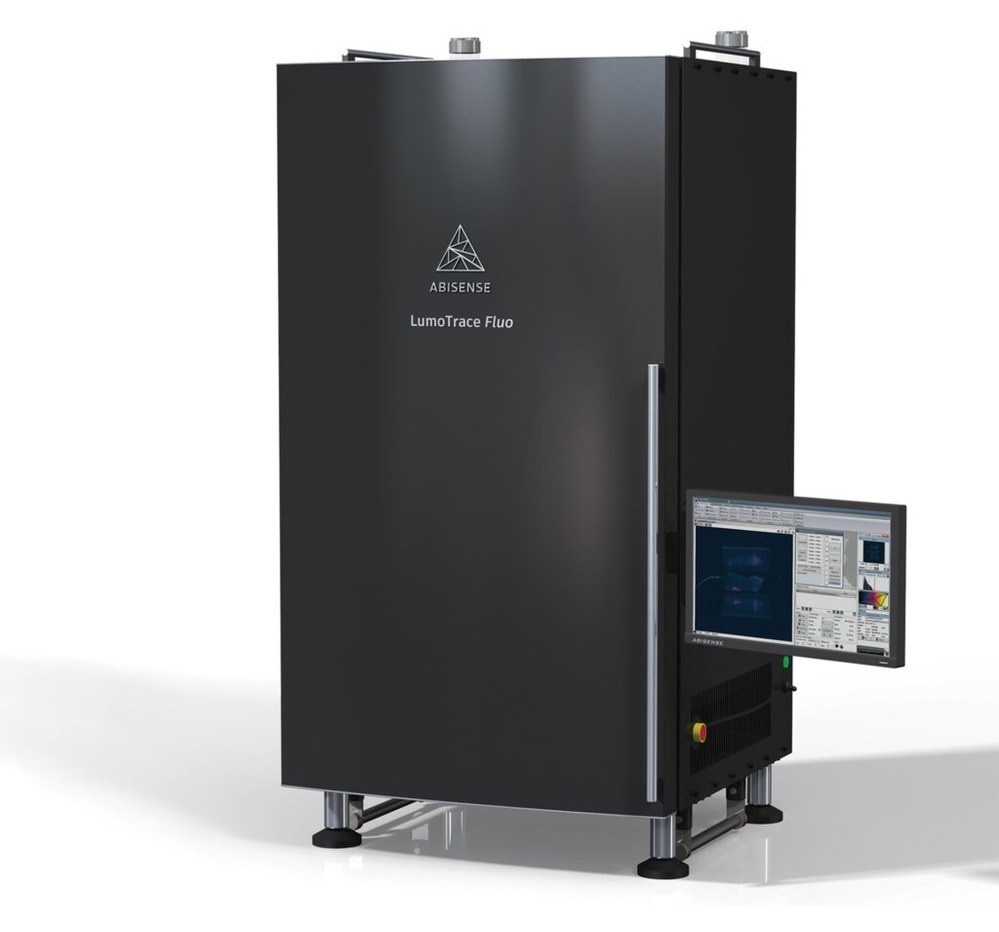Catalog
Search
213 products
View:
- Selected: 1Areas of use
- Selected: 0Item names
- Selected: 0Manufacturer
- Selected: 0Made in
- Selected: 0Additional
View:
213 products

MTP-01 Magnetic Coating Thickness Gauge
from
90 000 ₽
Measuring range of thickness of protective coatings, mm: from 0.2 to 10
Digital display of measurement results: yes
Power supply: from a PP3 type
battery with a voltage of 9V
Power consumption, MW: 100
Operating mode setting time, min: 1
Time of one measurement, sec: 3
Memory capacity, number of thickness values: 2000
Overall dimensions, mm:
- electronic unit (width-depth length) 120x60x25
- measuring transducer (diameter height) 33x23
- connecting cable (length) 1500±300
Weight, g, no more:
- electronic unit (without battery power) 80
- measuring converter 40
The kit includes:
- Electronic unit,
- Measuring converter
- Plate made of non-magnetic material for setting the upper limit of measurements
- Battery type PP3
- CD-ROM with the program
- Prism
- Cover
- Spring
- Case
- Passport
- Operation Manual
RII MNPO SPEKTR
Moscow
Produced in: Moscow
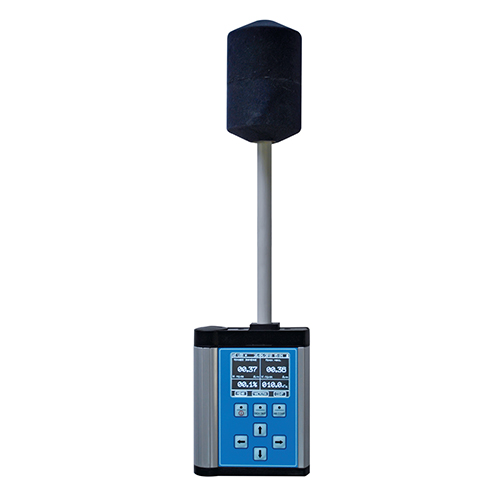
Electromagnetic radiation level meter P3-100
Broadband electromagnetic radiation meters P3-100 (hereinafter referred to as meters P3-100) are designed for measurements
energy flux densities (PPE) in the frequency range from 300 MHz to 40 GHz;
electric field strength (NEP) from 9 kHz to 300 MHz;
magnetic field strength (NEP) from 9 kHz to 50 MHz.
NNPO im. M.V.Frunze
Nizhny Novgorod
Produced in: Nizhny Novgorod
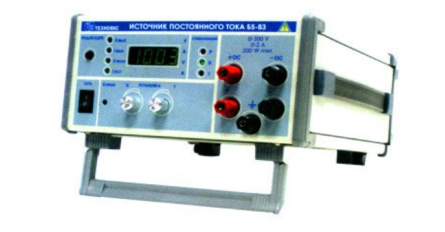
DC power supply B5-83
The B5-83 DC power supply is designed to provide constant
voltage and current to devices and equipment during the development, production,
operation and repair of electronic devices.
- Allows harsh operating conditions
- Wide range of currents and voltages at a maximum power of 200 watts
Technical specifications
Output voltage setting range from 3 to 300 V
Output current setting range from 0.05 to 2 A
Electrical output power, not more than 200 watts
The main error of the output voltage setting is ± 2 V
The main error of setting the output current is ± 0.02 A
Additional error in setting the output voltage caused by a deviation of the mains voltage from the nominal value by ± 10% ± (0.0001 · Uust + 3 mV)
Additional error in setting the output voltage caused by a change in the load current from 0.9 of the maximum value to zero ± (0.0002 · Uust + 10 mV)
Additional error in setting the output current caused by a deviation of the mains voltage from the nominal value by ± 10% ± (0.0002 · Iust + 1 mA)
Additional error in setting the output current caused by a change in the load voltage from 0.9 of the maximum value to zero ± (0.0005 · Iust + 2 mA)
The change in the output voltage in the voltage stabilization mode with a deviation of the ambient temperature in the operating temperature range by ± 10 ° C, not more than ± 250 mV
Change of the output current in the current stabilization mode with a deviation of the ambient temperature in the operating temperature range by ± 10 ° C, not more than ± 10 mA
Operating temperature range from minus 10 to 50 °C
AC power supply 220 V, 50 Hz
Power consumption, no more than 350 VA
Overall dimensions, mm 240x128x313
Weight, not more than 5.5 kg
TEKHNOYAKS
Moscow
Produced in: Moscow
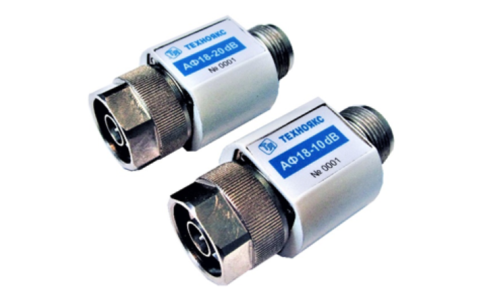
AF18-30dB
Basic properties
Wide frequency range;
Small VSWR values.
Operating conditions
Operating temperature range from minus 10 to 50 ° C;
The relative humidity of the air is up to 98% at a temperature of 25 ° C.
Technical specifications
Nominal attenuation, dB 30
Attenuation error, dB ± 1.5
VSWR 1.4
Frequency range, GHz 0-18
Input power, W 1
Type of coaxial connectors (according to GOST RV 51914-2002) IIIB-IIIP
TEKHNOYAKS
Moscow
Produced in: Moscow
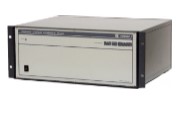
Rubidium reference generator RRS-002
The device is made in a 19-inch rack design with a 4U stand.
The rubidium reference generator RRS-002 provides up to 15 independent signal outputs with a frequency of 10 MHz (5 MHz). The device is designed for long-term uninterrupted operation both in round-the-clock continuous and in session mode. The high reliability of the generator is ensured by reserving the main generator blocks and, in case of malfunction of the active signal source, automatically switching to a backup one.
Ruknar
Nizhny Novgorod
Produced in: Nizhny Novgorod
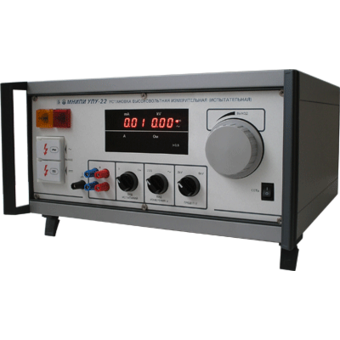
High-voltage test unit UPU-22
Technical specifications:
Output voltage (DC and AC), 0 - 2 kV; 0 - 5 kV
Built-in AC power supply, 10 - 25 A
The amplitude value
of the DC voltage ripple relative to the set
output voltage of 5 kV at idle is not more than ± 5%
Error in setting the output voltage, ± 3%
Protection tripping current, 101 -- 140 mA
Load current of DC and AC output voltage, not less than 1 mA
The limit of measuring the resistance of the integrity of the circuit connection, 0, 01 – 0.10 ohms
MNIPI
Minsk
Produced in: Belarus, Minsk
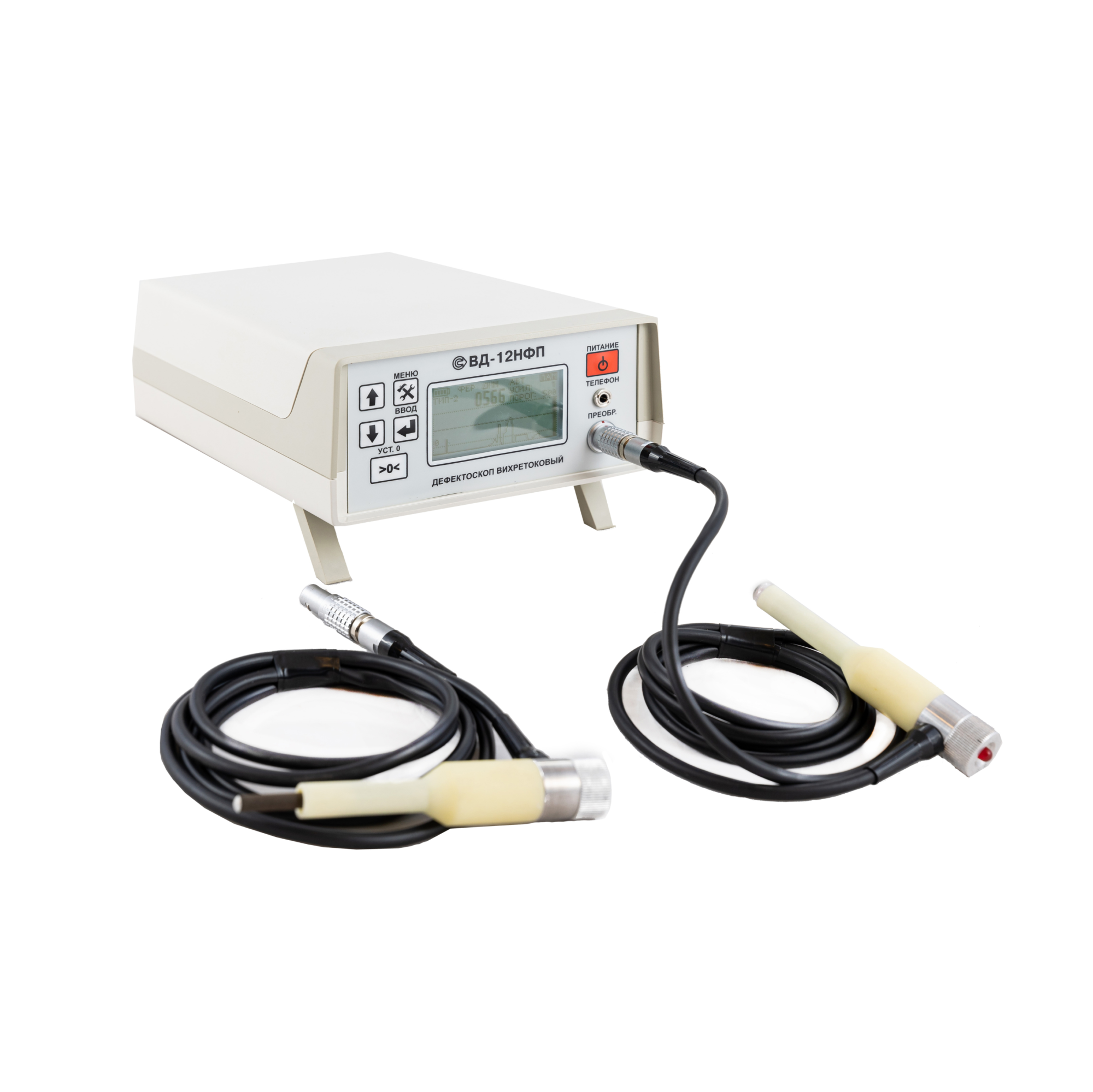
VD-12NFP Eddy Current Flaw Detector with 2 converters
from
292 500 ₽
The device allows you to detect surface defects like cracks, visualizing the signal from the continuity interruptions on the display. The design of the flaw detector allows to determine with high reliability the exact location and depth of defects even on rough surfaces of flat and curved shape, including under a layer of corrosion or in the presence of a protective coating of the controlled area of the product with a thickness of up to 3 mm.
The principle of operation of the VD-12NFP eddy current flaw detector:
The principle of operation of the VD-12NFP eddy current flaw detector is based on the phenomenon of electromagnetic induction. An alternating magnetic field created in the primary coil of the converter by means of a sinusoidal voltage generator excites eddy currents in the controlled product. A parasitic magnetic field formed by eddy currents at the locations of defects affects the measuring unit (two signal coils connected in series) of the converter, creating an electromotive force in it. The amplitude and phase of the secondary signal carries information about the properties of the defect and the position of the transducer relative to the surface of the controlled product. The output signal from the measuring unit of the converter, after amplification and processing using a microprocessor, is displayed on the readout of the device, and is also stored in the memory block for subsequent transmission to a personal computer. In addition, information about the defects is displayed on a piezoelectric bell used as an audio indicator.
Design, features and advantages of the VD-12NFP eddy current control device:
The VD-12NFP eddy current flaw detector is a portable device capable of working both in a desktop and in a suspended position in a special bag-case. This ensures convenient operation of the device in a variety of conditions: in the laboratory, in the factory shop or during field tests. The flaw detector consists of an electronic unit with controls and display of test results, as well as three replaceable converters with wear-resistant corundum tips connected to the electronic unit using a connector. The choice of the desired converter depends on the magnetic properties of the material. For the control of parts with grooves, a converter with an inclined tip is offered. The device is powered by 4 AA batteries located in the battery compartment of the electronic unit.
The advantages of the flaw detector include:
- a screen for visualizing the signal during measurement;
- light weight and compact dimensions that allow you to use the device in almost any conditions;
- the ability to control the quality of products of various curvature and surface roughness even in the presence of a protective coating or a layer of corrosion;
- wear resistance of converters, which is important when monitoring products with increased surface roughness (up to Rz£320);
- automatic detection of the type of converter when connected, as well as the presence of built-in memory for storing control results;
- the possibility to transfer data to a personal computer for storing or printing control protocols.
Scope of application:
Portability, high productivity, the ability to work with curved and rough surfaces, as well as the fact that the operation of the flaw detector is practically unaffected by humidity, pressure and contamination of the gas environment or the surface of the controlled product with non-conductive substances ensure the versatility of the device for detecting cracks in various materials.
The eddy current flaw detector VD-12NFP is actively used in heavy industry for diagnostics of metal structures, assemblies and mechanisms for various purposes in factory workshops or laboratories, including at enterprises of railway transport, automotive industry, mechanical engineering, pipelines and metal structures.
The VD-12NFP flaw detector can be used with equal success in the field, factory workshops, depots, laboratories and workshops to monitor the current condition, as well as to assess the degree of wear, the possibility and duration of further operation of such products made of metals and alloys as over-spring beams, wagon wheels, auto coupler housings, side frames, wheel couples and others.
Distinctive features:
• control of parts with surface roughness up to Rz320 due to wear-resistant corundum tips;
• assessment of the degree of danger (depth) of the defect;
• automatic detection of the converter type;
• microprocessor control;
• 5 universal programs for saving settings;
• capable of detecting defects with a depth of 0.3 mm
• The angle of deviation of the converter from the normal to the working surface up to 60°
• Operating frequency of 70 kHz;
• Maximum working clearance of 3mm;
• visualization of the signal from the defect;
• built-in memory for storing control results
• Equipped with a Bluetooth 2.0 wireless communication module, which allows you to transmit control results and control the flaw detector at a distance of up to 20m;
• The possibility of forming a control protocol based on the data transmitted to the PC;
• Temperature range from 0°C to +40°C;
• The design allows you to work with the flaw detector without removing it from the bag-case.
Basic kit:
Ia5.173.016: 1 electronic unit
Ia5.125.031: 1 converter, type 1; marked as (•)
Ia5.125.030: 1 converter, type 2; marked as (••)
Ia2.706.002: the KOIDZ-VD set of samples with a passport (consisting of:
Ia8.896.034: 1 piece;
Ia8.896.035: 1 piece;
Ia8.896.035-01: 1 piece) - A certificate of verification.
4 AA batteries
1 charger
1 small-sized phone
1 CD with software
1 special key
1 bag-case
A calibration certificate is issued for the VD-12NFP flaw detector.
1 passport
1 operating manual
1 calibration instruction
RII MNPO SPEKTR
Moscow
Produced in: Moscow
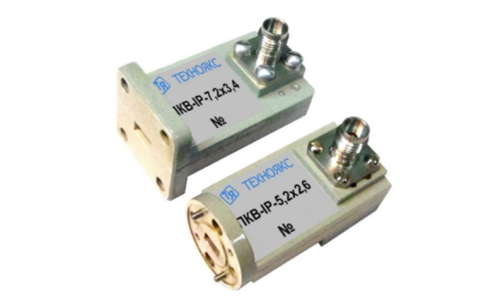
PKV-IP-7,2×3,4
Basic properties
Wide frequency range;
Small VSWR values.
Operating conditions
Operating temperature range from minus 10 to 50 ° C;
The relative humidity of the air is up to 98% at a temperature of 25 ° C.
Technical specifications
Waveguide cross section, mm 7.2×3.4
Type of coaxial connector (according to GOST RV 51914-2002) IP
Frequency range, GHz 25.96-37.50
VSWR 1.35
TEKHNOYAKS
Moscow
Produced in: Moscow

COMBO FACTOR (VE-meter 50Hz, VE-meter AT-004, E-meter AT-005, P3-34)
from
375 000 ₽
Frequency ranges: from 48 to 52 Hz, from 5 Hz to 400 kHz, from 10 kHz to 30 MHz, from 30 to 300 MHz, from 30 to 50 MHz, from 300 MHz to 18 GHz.
three - coordinate antennas;
large amount of built-in memory for recording measurement results;
high measurement accuracy;
the meter is provided with a two-year warranty and manufacturer's service support for the entire service life;
wireless Bluetooth communication channel;
Control unit and display of measurement results NTM-Terminal.
single control unit;
the ability to connect multiple meters to one control unit;
ergonomic body and comfortable keyboard;
high-resolution color display that provides a comfortable presentation of the results;
ability to record measurement results;
reference base of normative documentation.
The meter is adapted to work in the control and analytical complex "NTM-EcoM".
the possibility of monitoring the electromagnetic situation at the facilities;
storage of measurement results in the NTM-EcoM program archive;
analysis of the results obtained for compliance with current regulations;
execution of the protocol of instrumental measurements
NMT-ZASHCHITA
Moscow
Produced in: Moscow
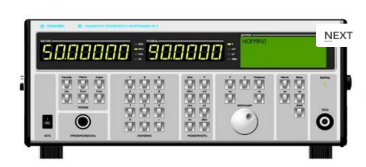
AC voltage calibrator H5-5
The calibrator is capable of operating both autonomously and as part of automated measuring systems with interfaces such as USB, RS-232, IEEE-488 (CPC).
Technical specifications
Ranges of reproduction of alternating electric voltage in the frequency range:
- from 10 Hz to 100 MHz from 3 MV to 3 V
- over 100 MHz to 2000 MHz from 30 MV to 3 V
Errors in the reproduction of alternating electric voltage in the frequency range:
- from 10 Hz to 100 kHz ± (0.066 – 0.8)%
- over 100 kHz to 100 MHz ± (0.85 – 2.5)%
- over 100 MHz to 700 MHz ± (1.5 – 12.7)%
- over 700 MHz to 2000 MHz ± (4.3 -14.0)%
General characteristics:
Operating temperature range from 5 to 40 °C
AC power supply 220 V, 50 Hz
Power consumption, no more than 180 VA
Overall dimensions, mm 495x217x411
Weight, not more than 24 kg
TEKHNOYAKS
Moscow
Produced in: Moscow
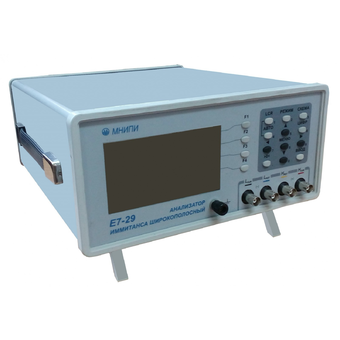
Immitance Broadband Analyzer E7-29
Technical specifications:
Extended frequency range 50 kHz–15 MHz
The basic error is ±0.2 %
The level of the measuring signal is 40 mV – 1 V s.c
. Offset voltage (0 – 40) V
The discreteness of the operating frequency setting is 1 Hz
Graphical analysis of measured values in a given frequency range
USB 2.0 interface
-100 C to 400 C; humidity 90% at 300 C
Dimensions, weight: 270x134x320 mm, 5 kg
Power supply ~230 V, 20 VA
MNIPI
Minsk
Produced in: Belarus, Minsk
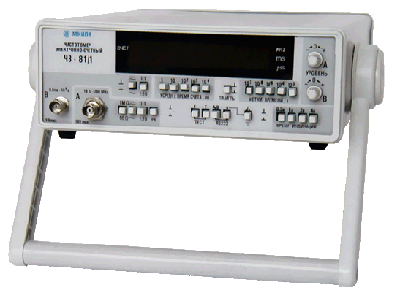
Frequency meters Ch3-81, Ch3-81/1
Designed to measure the frequency or single and averaged period of sinusoidal and pulse signals, as well as to measure the pulse duration and frequency ratio, with a guaranteed measurement error of up to 10-7za year.
Description:
Ch3-81 (inputs A, B, C) – range 0.1 Hz–2.5 GHz
Ch3-81/1 (inputs A, B) – range 0.1 Hz–200 MHz
Frequency measurement, frequency ratios
Measurement of the period, duration of 1 microsecond–10000 s
Signal level 30 mV–10 V (eff.), pulse up to 30 V
Thermostated quartz 5 MHz: ±10-7 (year) ±7.5X10-9(day)
Frequency temperature departure: ±2.5X10-8 (+5...+40 °C)
Number of averaged periods: 1-104
Timestamps 10-7-10-3 s
RS-232 interface
8-bit SD indicator
Dimensions, weight 80X220X300 mm, 3 kg
Power supply: ~ 220V, 20V
MNIPI
Minsk
Produced in: Belarus, Minsk
